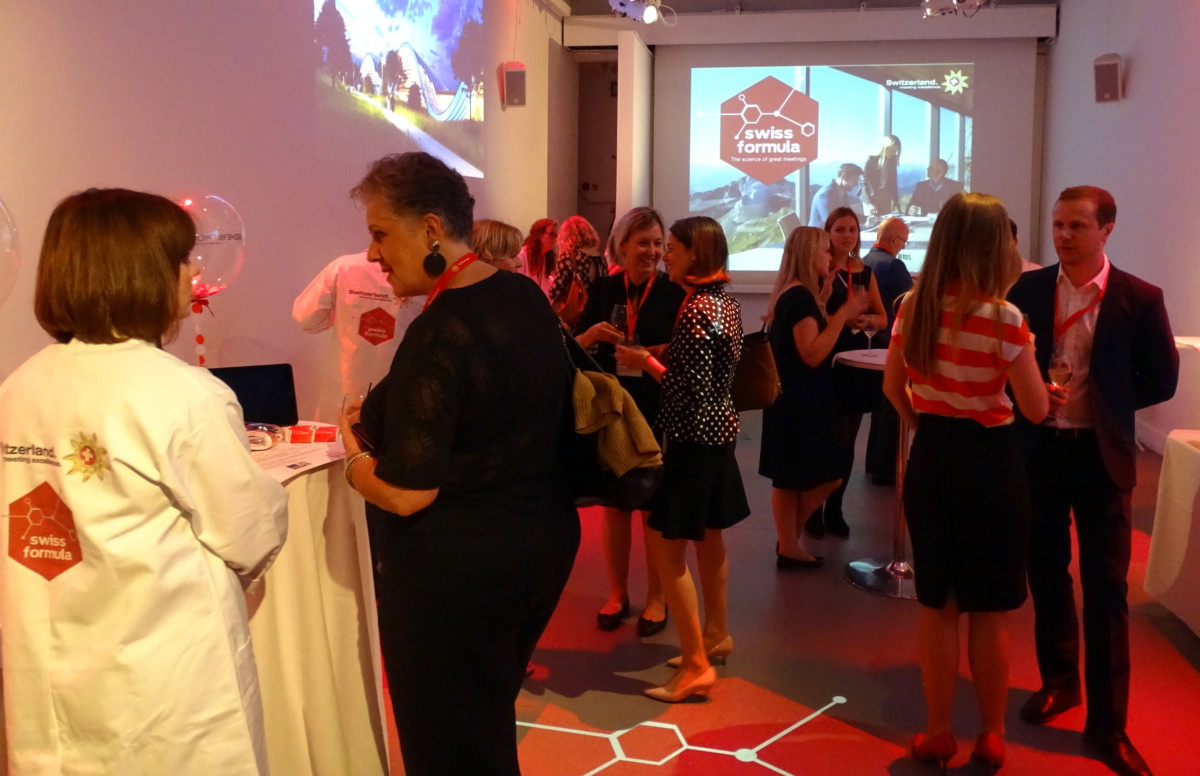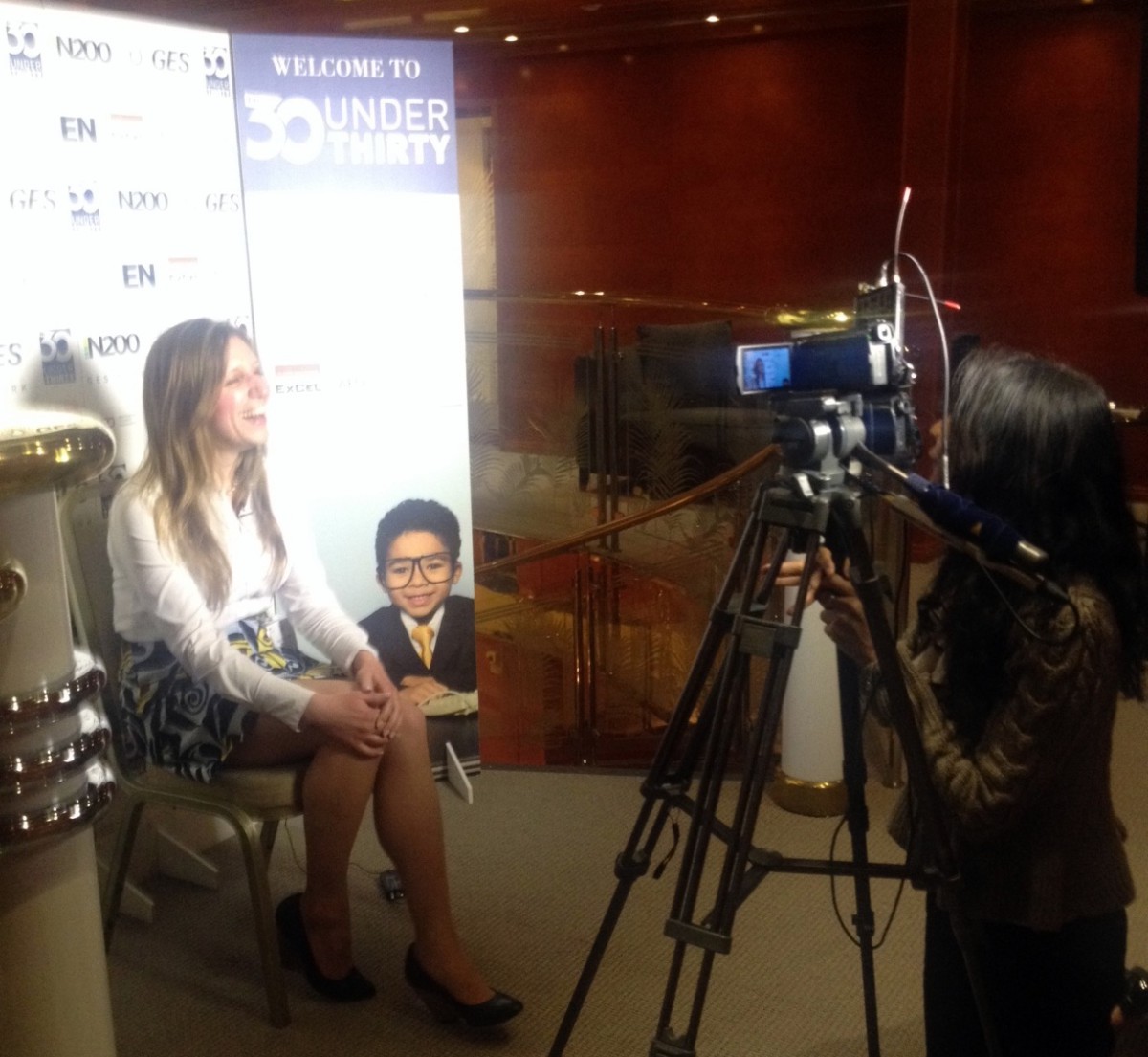Influencer marketing is currently a hot topic in the MICE industry. The leisure travel industry has been implementing it successfully since around 2012 as I can remember when I visited the Wold Travel Market. The MICE industry, on the other hand, is slowly testing it since last year. Given that we have so much to learn from the leisure travel industry, ITB Berlin was the perfect opportunity to organise an Event Planners Talk live session about this topic. Each year ITB Berlin has a dedicated MICE programme organised by their official partner, the German Event Planners Association, Verband der Veranstaltungsorganisatoren e.V. (VDVO). This year a half day conference took place, along the MICE Hub exhibition and MICE Night in the evening at an external venue, International Club Berlin. The Event Planners Talk took place just before the MICE Night and welcomed international planners.
For this session we had the pleasure to welcome Nicholas Montemaggi, Chief Marketing Officer at iambassador, and Erik Mortensen, Head of Business Events Denmark at Visit Denmark. I met Nicholas back in 2012 at the World Travel Market when he was working for the Emilia Romagna Tourist Board and was one of the first destinations to run an influencer campaign, Blog Ville. I worked with Visit Denmark on the #everythingiscloser campaign that they launched end of last year.
Three of us brought three different points of view from a destination, agency and blogger perspectives.
Who is an influencer?
According to Erik, the answer lies in the name itself “it’s someone who can influence your target audience that you are trying to engage with your brand”. The number of followers or years of experience in the industry is not important. Nicholas added that the term influencer can be used in different themes and topics. When we speak about digital influencers this is someone who has influence online. If the person reaches the target audience via any of the online mediums he/ she is an influencer.
Is “social media influencer” a new job title?
There is confusion in the industry about it. Iambassador, for example, was founded by professional bloggers (professionals in their approach to the business of blogging rather being paid to blog) and also bloggers in their network have corporate background (investment bankers, doctors, lobbyists). These professionals worked many years in the industry and developed their writing skills and social media skills. Furthermore it took them time to start monetising their sites. It was a side thing until readers started asking for their advice and they realised that they actually influence people.
What’s happening now in the industry is that young bloggers are approaching destinations without a solid business case. There are people who sell the idea that it’s possible to travel the world for free just by having a blog or having following on social media. That’s a wrong way of communicating that by having an online profile you can travel the world for free. The barrier to entry is very low to open a blog. As a result there are now bloggers who don’t exist anymore because they stop doing it. The destinations invest time and money and for them it will be lost if the blogger stops doing it so therefore for destinations it’s important to work with established and professional bloggers.
Influencer marketing is inevitable, so instead of resisting and fighting it, destinations should educate themselves how to work with influencers. Destinations and companies can educate themselves in the scene and what influencers are doing through events and workshops, to learn how to recognise who is a professional influencer but also who is the right influencer for their objectives.

How to spot the authenticity of an influencer?
There are tools for it, so before contacting an influencer the destination or agency can check their profile. For example for Twitter there is Twitter Audit to know how many real followers someone has, and for Instagram Social Blade is a good tool to spot irregular activity. Also just by looking at the profile and pictures it’s possible to spot fake engagement. After this check the next step will be to look whether it’s a brand match and if you want to have this person as a brand or destination ambassador.
It was inevitable that we’ll mention the recent #bloggergate story. The way the UK vlogger should have reached out to hotel owner, instead of asking for a free stay she should have made a compelling pitch that would include her media kit presenting her target markets, explain why the hotel would be a good fit for her audience because of the content she produces and what she has in mind to do in Dublin while she’s there.
What’s the benefit for a destination to work with an agency as opposed to working directly with the blogger/ influencer?
The agency, iambassador, does campaigns where the bloggers get compensated and the agency takes over the contracting and that’s an advantage for destinations and government organisations when working with bloggers who don’t run their blogs as legal entities. They also do tenders and RFPs, and also manage campaigns where multiple bloggers are involved, sometimes as much as 20 – 50 bloggers in a year. The agency will do the research for the destination and has their own database with analytics and demographic reach of each blogger. The agency develops a social media campaign and a long tern partnership with the destination.

Will the marketing spend in influencer marketing will increase of decrease in the next year?
For Visit Denmark and #everythingiscloser campaign media spend wise it was a small percentage and that’s something they wanted to do as an add on because they launched a new brand platform and wanted to increase its reach to the target audience. Additionally, they wanted to get an interaction with the brand and inspirational element apart the commercial aspect, and here is where the influencer part fitted well. Whether they will do more of? It has to fit into a flow of many different things. They will not do an influencer only campaign but it has to be a part of the package to make sure they reach the right audience and engage them in the right way.

What are the advantages of working with digital influencers?
Social media is not only for millennials and there are bloggers 30+ years old who are social media influencers. Destinations that target senior travellers say that they see travellers get a printed version of the blog articles and take with them to the destination. Sometimes people also don’t realise that they consume their information from blogs.
Whether it’s a short term vs. long term partnership depends on the objectives.
An example: Italian city wanted to increase awareness in the Dutch market and invited a prominent Dutch blogger. For the first six months the article didn’t have readers but before the summer season the analytics started to improve. During the summer there was a peak from readers in Italy so they discovered that Dutch travellers were in this city when searching for information what to do. Bloggers invest time in SEO for example and that was the result of it.
If it’s something short term than better to use social media that is more immediate and will soon disappears. But now it’s important to add extra budget to boost posts on social media as organic reach decreases.
Dark web is another trend that we’ll see more of in the next years. That means that people are no longer share articles via social media but send them via private messages. The challenge here is that it will be harder to track.

How influencers should deal with dropping engagement on social media?
Destinations understand that it’s happening to everyone and advise not to focus on the numbers. The numbers in the MICE industry are not big also across other activities (e.g. – trade shows). It’s about how to connect and influence the people in the industry. In the MICE business it’s important to start a conversation. Therefore, instead of focusing on numbers, focus on content, quality and brand match.
Don’t focus too much on follower numbers because as happened now with Facebook and Instagram they change the algorithm. That’s why it’s also important work with people who have a website.
When to work with micro influencers?
Micro influencers are an important component for very niche segments. They might have a small number of readers, but all the readers are targeted audience. Working with micro influencers can be more advantageous than working with big influencers.
Bloggers are diversifying as well as their blogs evolve. What starts as a blog can turn into a business. For example a cooking school or a show, guided tours, a book or an industry event. There are additional advantages for destinations working with influencers who diversify their product range.

How do you define success and KPIs working with an influencer?
Visit Denmark shifts its focus from Cost per Thousand Impressions (CPM) to engagement and acquisitions. Increased interaction can be achieved through quality product and quality partners. The tourist board hands the control to commercial partners so there will be conversion at various stages. As a result it makes it more challenging for the tourist board to measure strait away.
In the leisure travel industry bloggers have affiliate partnerships with major booking platforms. These platform can provide the agency with conversion rates that happen through the blogger after 6 – 12 months. Direct feedback is an important indicator as well. Because of the close relationships between the blogger, tourist destination or provider and the agency there will be direct feedback. Further KPIs will be determined pre campaign and include the number of reach, readership and engagement.
What’s the future of influencer marketing?
It’s recommended to work with established bloggers who have a proven track record. Those who enter the business because they think they can travel the world for free and don’t treat the blog as a business will be out very quick. Spotting fake followers and engagement will become even easier. The ones who will survive are the ones who are constantly updating about the changes in the social media landscape.
As social media came it was for free and now either you spend a lot of money or drop out. The same might happen with influencers. With the increasing regulations about disclosures it will take the fun and spontaneity out of it. While traditional media numbers are also going down there is a clash between the new and the old media and sometimes the influencer can provide a better content and match than a journalist. Influencers bring a new set of skills including photography, writing and video that destinations can leverage.

Photos by Thomas Loris, Blitzboxx




No Comments